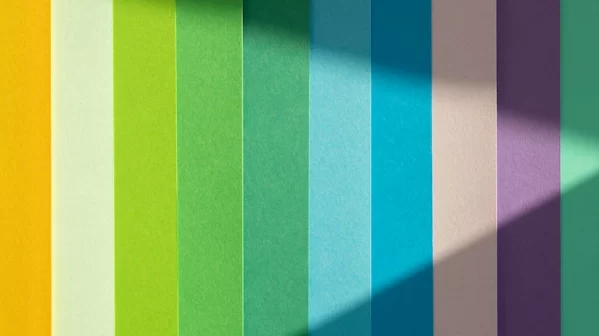What is color psychology?
The psychology of color is an area of study that analyzes how we perceive, move us and react to the visual stimulus that is color. In this sense, we cannot forget that the interpretation of colors is not fully objective since it is conditioned by culture . In any case, there are certain accepted principles that apply fundamentally to Western societies, which are what we are going to see. You can also get in touch with Best Graphic Designing Services Company
White
White is light and purity. Among the attributes and values associated with the color white are:
- cleanliness and brightness
- straightforward and simplicity
- openness and breadth
- Purity, peace and serenity
- naivety and innocence
Although we can consider all of them positive values, we cannot forget that white can also have other connotations, such as:
- isolation and distance
- coldness or emptiness
- Boredom
Black
On the opposite side we have black, as in the previous case we find that depending on how it is used it can transmit different emotions, among which are:
- Strength, power and authority
- Elegance, formality and sobriety.
- mystery and the unknown
- sin or forbidden
- Intransigence
- rebellion, countercurrent
- Darkness, death, mourning, destruction, unrest
Grey
Grey is a color that is considered to be quite neutral, so it is often used to balance the use of other colors. Among its meanings are the following:
- On the one hand, it transmits peace, tenacity and tranquility
- But also mediocrity or indeterminacy, indecision, coldness and lack of energy
- As well as sometimes sadness, doubt or melancholy
- In any case, gray is the color of neutrality.
Red
Red is a very interesting color, due to its great impact, but precisely because of this great intensity, its use must be measured and taken care of. Among its values and attributes are:
- Stimulation, passion, strength and action
- prosperity and power
- Heat, energy, vitality and dynamism
- Extraversion, spontaneity and daring
- affection and love
- health, happiness and
- sensuality and desire
- revolution and rebellion
- danger and violence
- virility and potency
Orange
Without a doubt, orange is one of the funniest colors in the chromatic range, as they all have different meanings and its interpretation will depend on what other colors it is associated with.
- Optimism, enthusiasm, joy, energy, vitality and action
- Closeness, sociability, originality, extraversion
- Also lust and sensuality, with the divine and exaltation
- Exoticism, excessively flashy, a frivolous and conventional attitude
- According to some tonalities they also represent the inappropriate and the danger
As an extra curiosity, along with red and yellow, orange has a great power of synesthesia, which mixes auditory, visual, gustatory, olfactory and tactile sensations. These colors can evoke flavours , specifically acids (they are the colors of lemon, oranges, tangerines, strawberries, grapefruit, etc.) or sweets (in shades reminiscent of honey).
Yellow
Yellow is considered a rather ambiguous color, with yellow representing light and gold. Among its attributes and values are:
- Happiness, wealth, power, abundance, strength and action.
- But it also represents envy, anger and betrayal
- Joy, originality, intelligence
- In a pale tone, it represents illness, envy, jealousy, deterioration, worry
- The gold hue represents luxury, wealth and opulence
Blue
Blue is the color of the sky and water, it is a corporate color, one of the most used by companies. This color is associated with:
- Represents tranquility, freshness and intelligence
- Confidence, purity, inspiration and self-control
- Stability, truth, moderation, rectitude, fidelity and commitment
- In dark or marine tones it conveys depth, order, sacred or divine, immortality and power.
- In light blue tones it is related to protection, health, knowledge, generosity
Purple
Like yellow, purple is an ambiguity color with many subjective interpretations.
- Sophistication, elegance and glamour, vanity
- Mystery, nostalgia, spirituality, magic and mysticism, fantasy
- Nobility, divinity, luxury, ambition, success
- Institutionality and respect
- In very dark tones (Nazarene) it has cultural connotations such as penance, vulnerability
- In mauve and lilac tones (pastel) sensitivity, delicacy, sweetness, friendship, affection
- It is also the color of feminism and femininity, childhood and gender equality.
Pink
Unlike the previous one, pink has a clearly limited meaning. Pink symbolizes:
- Kindness, positivity, the sentimental, sensitivity, courtesy, good manners, childhood and innocence
- Pink is a sign of hope, and it inspires warmth and feelings of comfort.
- Kindness, sympathy, gratitude and beauty
Green
Green represents youth, hope and new life, but it also represents action and ecology. Among the interpretations attributed to this color are:
- Nature and naturalness, environment, ecology
- Freshness life, ecology, vitality, health, healing
- Youth and renewal
- relaxation and wellness
Brown
It is a chromatic stimulus that is very present in nature, so it also has ambivalent meanings, as well as many different uses.
- Due to its relationship with nature and some foods, it is associated with authenticity, quality, naturalness and simplicity.
- In warm tones it transmits shelter, comfort and serenity
- But also to unpleasant emotions such as sadness or melancholy
Now that you know what each color means, reflect and choose the attributes and values of your brand or project and give it the personality that corresponds to it!
